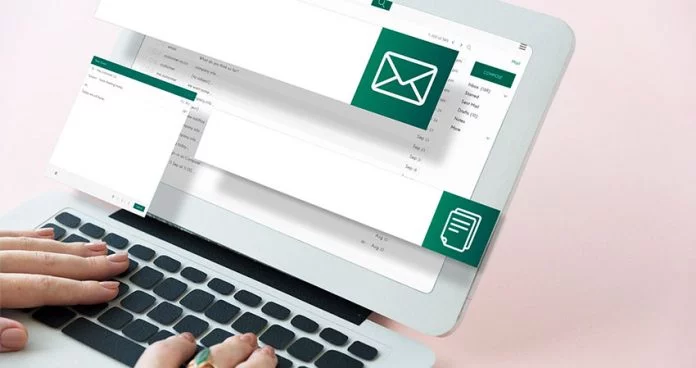Despite the ubiquity of email marketing, maintaining a consistent delivery rate is a common challenge for companies.
Inboxes have evolved to give people more options to filter out unwanted messages. Besides, many countries are updating communications laws to fight spam emails.
Marketers need to strengthen their reputations and ensure they follow email best practices to improve email deliverability.
It’s not a surprise that email deliverability has always been a struggle for email marketers. You’ve probably come across many articles like this one with advice about how to improve your email deliverability rates.
The thing is, there are essential steps you can take to increase your email deliverability today. In 2024 one in five emails was missing the inbox.
That means, on average, 20% of emails are not reaching their destination. It’s a universal issue in the email marketing world.
There are many ways to help improve email deliverability, and we’ll be providing some of the best ones in this article.
Most importantly, we’ll be giving you the key to ensuring your email deliverability rate improves.
What is email deliverability? What affects it?
It is the rate at which an email reaches the subscriber’s inbox. So what does it mean when you have poor email deliverability? Well, it’s when your message fails to make it to the mailbox but instead hits the spam folder or junk mail or is entirely blocked by the ISP.
It’s time to take action and improve your email deliverability. Let’s take a look at the top five ways you can enhance email deliverability to send your next email campaign to the top.
Many factors can cause your ability to deliver emails, but deliverability is something that affects your, the sender’s, ability to provide an email.
What are the Ways to Improve Email Deliverability?
Content is King
To produce good content, it is best to have a plan. Having a detailed schedule of your email content in place will allow your business to look professional, organized, and knowledgeable to your audience. Having your content ready in advance saves a lot of time and energy.
If you get creative with your content, target it towards different audiences, and use national holidays and other events that are going on in your industry.
The most important advice to make is whether you are sending it to a small or large list, make sure you eliminate the phrases that could come off as “spam-ish” content.
This is one way your emails could be sent to the spam folder, or eventually, your IP could be dinged and put on a potential blocklist.
Subject lines matter
Your subject lines are crucial, no if, and’s or buts about it. This is the first part of the email your subscribers will see, and the subject line determines if your subscribers will open your email or not.
ISPs are becoming better at filtering certain phrases that look like spam content, which then leads to your subscriber’s junk box.
Try to avoid subject lines with all caps or RISK-FREE, FREE, become debt-free today, or even use too many exclamation points.
It’s all a big no-no. If it sounds like spam, it is likely to be considered spam.
Target Audience & List Segmentation
Sending out mass emails is probably not a good idea. Without segmentation, your engagement rates will suffer, open standards will hurt, and you will start to see your unsubscribe rates increase.
Sales will not increase if you’re sending it to a mass list of disengaged people.
List Segmentation can drastically improve your email marketing campaigns. Your audience is not all the same, and you know that.
People have different likes and interests, so why target them all the same if they’re entirely different?
A segment can be based on…
- Engagement History
- Subscribers’ interests and preferences
- Success Milestones of Subscribers
- Point of Sign-Up
- Geography and Demographics
- Sales Funnel and Lead Score
- Level of disengagement
Embedded Links
So far we’ve listed what to do to improve your email deliverability, but let’s talk about links in your emails and what not to do. It can be:
- Avoiding the use of link shorteners. These are used heavily by spammers to mask their link destinations and are always listed on major blocklists.
- Avoiding the use of a full HTTP link as the forward-facing text of a hyperlink as using a full hyperlink as the forward-facing part of a hyperlink looks suspicious because there’s no guarantee that it will redirect to some other URL or it could redirect to another, malicious page. Instead, use this simple text such as “Click Here” and embed your link into that text or include a button in your communication that links to your page.
- Don’t try to use any JavaScript or an HTML form in your email.
- Don’t include any attachments.
Email Hygiene
It is the most important key to keep in mind when it comes to improving email deliverability.
Yes, content, list segmentation, inside links, and your subject line matter, but if you’re sending it to inactive users, hard or soft bounces, or hidden email threats many things could happen to you.
Most of them are bad. Email Hygiene is the process of identifying active and inactive email threats in your email data.
Concluding on the Ways to Improve Email Deliverability:
Email marketing campaigns cannot bring fruitful outcomes if emails are not delivered to the right audience. Therefore, marketers need to ensure that their prospects receive their emails.
Refer to the above-explained methods to enhance your email’s deliverability rate.
Recommended For You:
Is Tableau the Best Business Intelligence Tool for Business in 2024?

